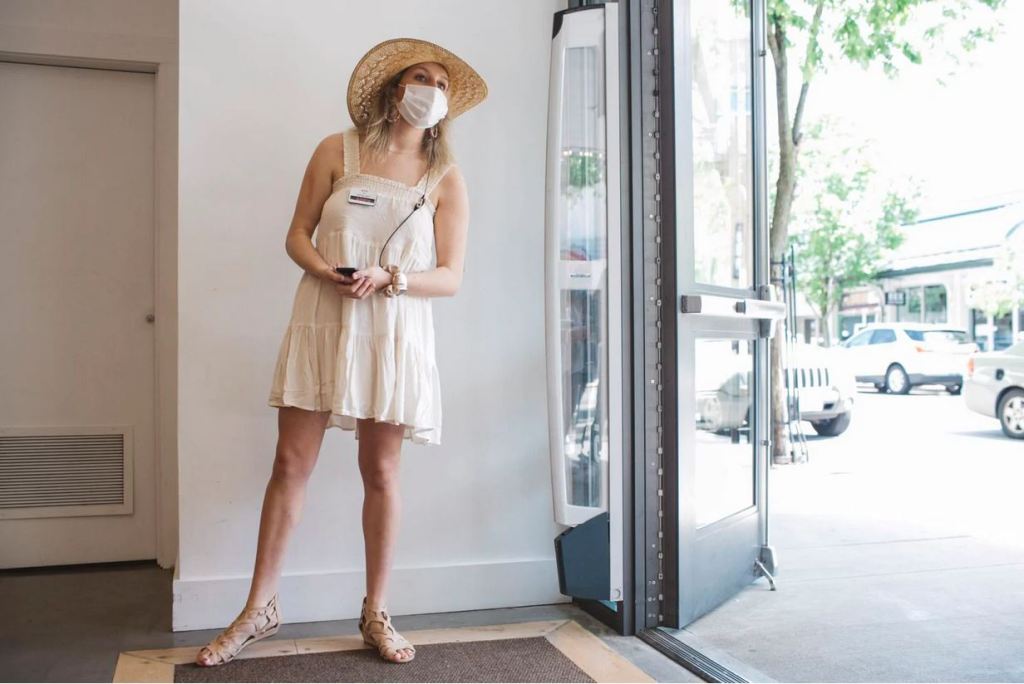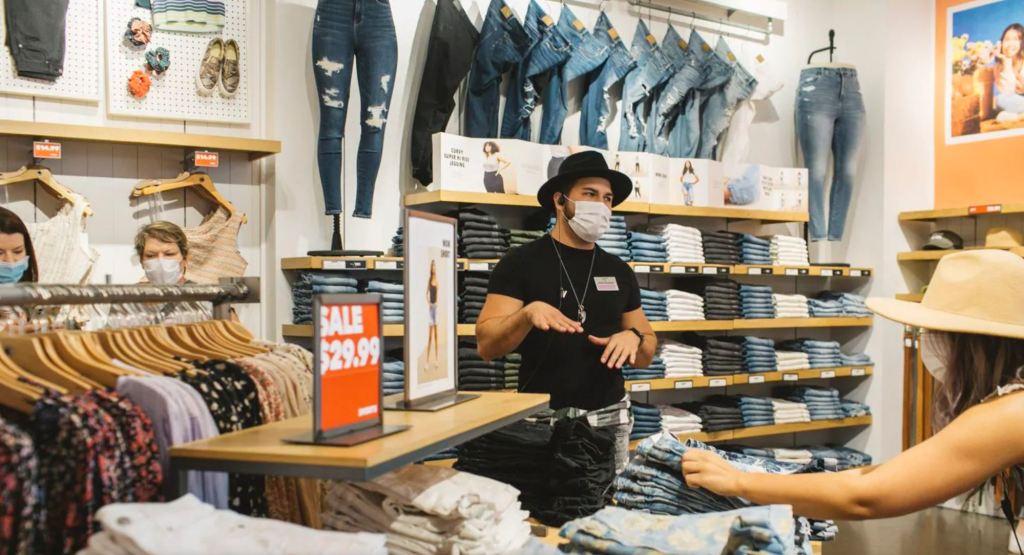American Eagle, Sephora and Best Buy are among the retailers reimagining their stores to make shopping faster, easier and safer

By Abha Bhattarai | Link to article
Tiara Show went to the mall last week in search of summer clothes — and a distraction from the pandemic that has kept her homebound since March.
But there were coronavirus reminders everywhere: A greeter at American Eagle told her masks were mandatory and offered her a disposable one. Inside, shelves had been pared down and rearranged, with jeans in one area, shirts in another. Every other fitting room was closed. After paying for her purchase — shirts, shorts and earrings — through a plexiglass divider, Show tore the receipt from the printer herself.
“Everything was so different,” said the 23-year-old from Missoula, Mont. “If anything, it made the virus feel more real.”
Across the country, stores are reopening to a changed reality. Retailers that have spent years trying to get customers to linger, in hopes they’ll buy more than they need, are reimagining their stores for a grab-and-go future filled with deliberate purchases. Gone, they say, are the days of trying on makeup or playing with toys in the aisles. The focus now is on making shopping faster, easier and safer to accommodate long-term shifts in consumer expectations and habits.
Apple is checking shoppers’ temperatures at the door. Best Buy is asking customers to shop by appointment. Macy’s and Nordstrom are doing away with beauty consultations and alteration services, while the Gap is closing off bathrooms and fitting rooms. Cosmetics giant Sephora won’t allow shoppers to test products anymore. Others are quarantining returns for as long as 72 hours before putting merchandise back on shelves.
American Eagle Outfitters, meanwhile, is reimagining every part of the shopping experience. It has invested in curbside pickup and infrared machines that measure customers’ temperatures as they walk by. Entryway displays once piled high with apparel have become “welcome tables” with bottles of hand sanitizer, disposable masks and sticky blue mats that clean shoe soles. Clothes are even folded differently, to encourage hands-off browsing. The new protocols, which already have been rolled out at 435, or nearly half, of its U.S. stores, offer a glimpse of how even the most innocuous interactions might be tempered.
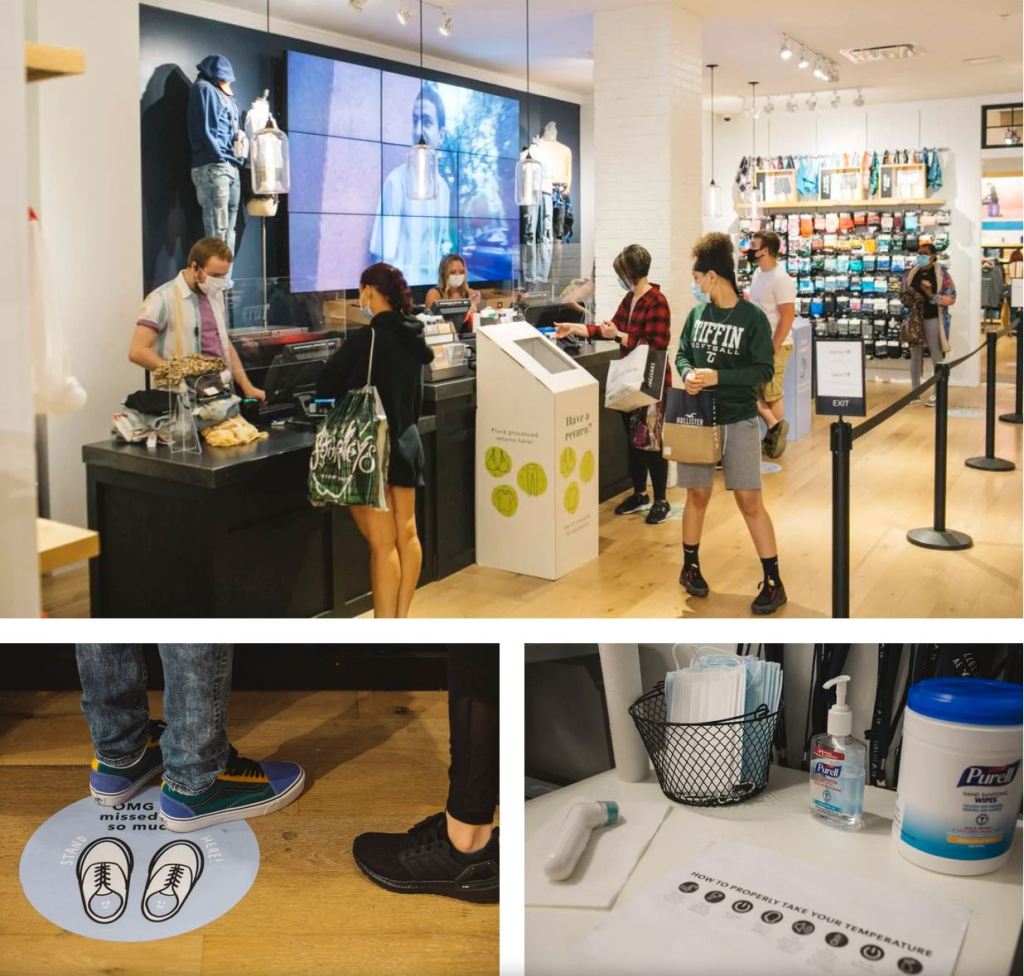
“From the moment you walk into our store, we want you to see something that’s new,” said Andrew McLean, the company’s chief commercial officer. “The sticky mat, the welcome table — they’re all triggers in the customer’s mind that things are different now.”
The retailer, which now limits the number of people in stores, is using a mobile app to notify customers when it’s their turn to shop. And it has spelled out its new protocols in a 65-page employee handbook, including how to fold jeans and T-shirts to allow shoppers to examine them in detail without touching them.
The efforts illustrate the lengths to which retailers are going to reassure skittish consumers that it’s safe to shop in person again, even as U.S. coronavirus deaths surpass 92,000. The already bruised industry has been hit hard during the pandemic, as weeks-long shutdowns ushered the broader economy into recession. Four major chains — J. Crew, Neiman Marcus, Stage Stores and J.C. Penney — have filed for Chapter 11 bankruptcy protection this month, and a fifth, Pier 1, is headed toward extinction. And analysts say many more retailers are teetering toward bankruptcy, raising the stakes on their public health response.
“Experience has shown us that loosening restrictions and shelter-in-place orders means a resurgence of disease,” said Robert A. Bednarczyk, a professor of global health and epidemiology at Emory University’s Rollins School of Public Health. “Masks, temperature checks, hand hygiene — they’re all important as stores reopen, but there are still risks for increased transmission.”
Retailers have spent years adding interactive displays, sample stations, even rock-climbing walls and full-service bars to their stores in hopes of offering shoppers an experience they can’t get online. But analysts say many of those efforts are now impractical or unsafe, requiring an overhaul that could ultimately make the shopping experience less enjoyable and further cut into an already weak retail environment.
Many of the changes, they say, are as much about being overtly reassuring as they are pragmatic: If someone asks for a fitting room at American Eagle, for example, employees must disinfect door handles and fixtures in clear view of the shopper before allowing them in.
“Retailers are starting to consider more than just the cleanliness of their stores,” said Wendy Liebmann, chief executive of WSL Strategic Retail, a New York-based consulting firm. “They’re thinking about merchandising, about where things go. How can they make it easier for people to shop? This pandemic isn’t going to level off. It’s going to be a long roller coaster.”
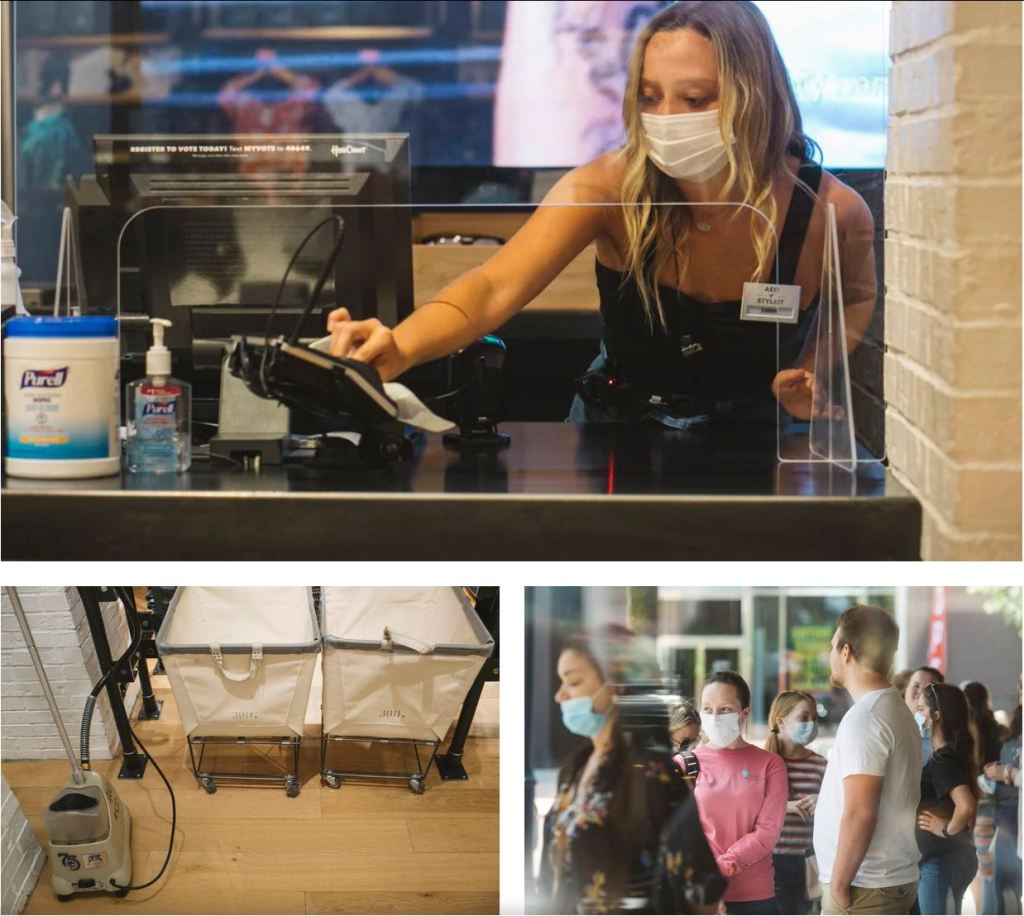
At Child’s Play, an independent toy store in Washington, D.C., owner Steven Aarons is preparing for fewer impulse buys — and fewer children. He is removing play tables and replacing Pokémon cards and jacks with bigger-ticket items — such as 1,000-piece puzzles and scooters — that parents can quickly pick up.
“It feels like we’re starting a whole new business,” said Aarons, who opened the store 34 years ago. “It’s painful to say we’re going to take away the play tables and not let kids run around the store anymore, but it’s also the right thing to do.”
It could be years, he says, before customers feel comfortable spending hours browsing aisles with their children. In the meantime, he has built up the company’s website and added a delivery service that has been in high demand since the pandemic shutdowns began. Employees drop off about 60 orders a day from the company’s Chevy Chase store, though overall sales are down about 50 percent.
Pandora, a Danish jeweler that operates 375 stores in the United States, has moved its jewelry-cleaning machines from backrooms to the selling floor so that employees can sanitize each piece after it’s been tried on, in full view of customers.
Trying on jewelry comes with its own precautions. The retailer has created an elaborate system to ensure customers and employees don’t come into physical contact. Customers are instructed to stand three feet from store counters. If someone wants to try on jewelry, the employee takes the item out of the case and places it on a tray on the counter.
“The customer steps forward as the employee steps backward, so there’s always that six-foot space,” said Sid Keswani, president of the company’s North American operations.
The company also is limiting customers to five at a time and is developing new safety measures for the busy holiday season, which accounts for about 40 percent of its sales.
“We feel it’s a pretty safe journey,” Keswani said. “But I say pretty safe because, as you know, there are no guarantees right now.”
Data show a steady increase in foot traffic since malls began reopening this month. An analysis of eight shopping centers that opened May 1, including in Oklahoma, Tennessee and Georgia, shows that it went from a trickle — about one-fifth the number of shoppers a year earlier — to a quick acceleration that in some cases exceeded average daily rates a year earlier.
By May 6, Midland Park Mall in Texas reported a 79 percent jump from the day before, according to Placer.ai, which analyzes foot traffic patterns using location data from 30 million devices. Macy’s stores in South Carolina, meanwhile, saw traffic jump 9 percent from a year earlier.
It’s been a similar story at American Eagle, where shoppers returned cautiously at first, then with more gusto. Sales also are on the rise: Many reopened stores are selling as much merchandise as they were a year ago, according to Jay Schottenstein, the company’s chairman and chief executive.
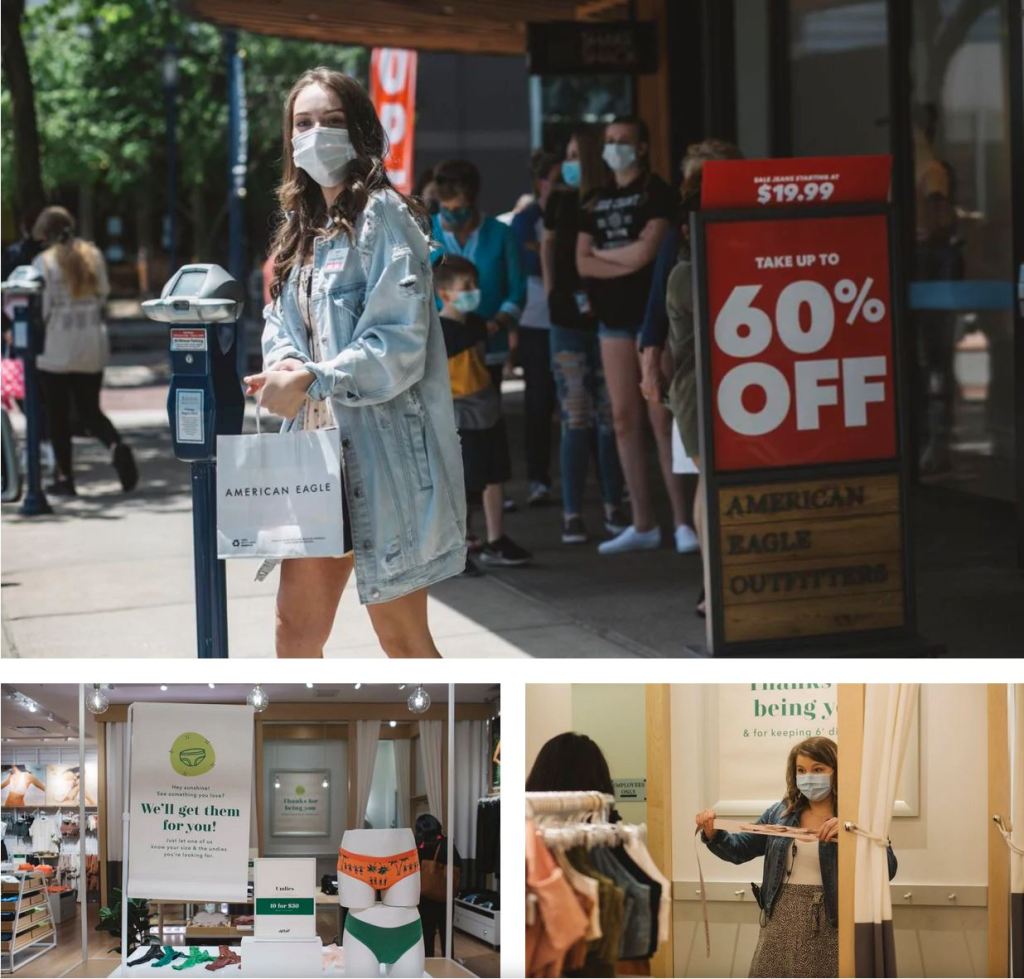
“The customers who come in are coming in to buy,” he said. “They are not coming in to look.”
The company closed all 980 of its U.S. American Eagle and Aerie stores in March and furloughed the majority of its 40,000 workers. Reopenings began May 1, with a host of new guidelines created with help from doctors: Employees must wash their hands for 20 seconds at the beginning of each shift, then disinfect a store thermometer before taking their own temperature.
Alongside new protocols are more open-ended considerations. Employees are encouraged to smile from behind their masks and pay attention to nonverbal cues. “With masks on, you may feel a bit awkward at first, but don’t let that hold you up!” the employee manual says. “We don’t want this to feel like a sterile or clinical interaction. Even though you may be 6 feet apart — it’s your job to still create a connection!”
There are tutorials for do-it-yourself face masks, and a guide to creating badges that include a smiling picture of each employee. The goal, executives say, is to reassure customers in an era of pandemic shopping.
“This has been a two-month process of figuring out what it’s going to take to make people feel secure,” Schottenstein said. “It’s a new reality: Customers want to come back in, but they want to come back where they feel safe.”
